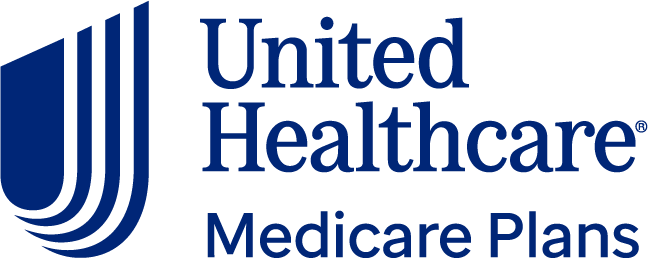Medicare Costs Are Rising in 2026. Here’s How to Save During Open Enrollment
Enrollees should review their plans carefully and think twice about letting their current coverage auto-renew.

Many, or all, of the products featured on this page are from our advertising partners who compensate us when you take certain actions on our website or click to take an action on their website. However, this does not influence our evaluations. Our opinions are our own. Here is a list of our partners and here's how we make money.
Nearly two-thirds of Americans (64%) believe Medicare benefits will be reduced under the current administration, according to a recent NerdWallet survey. For some, a reduction in benefits could be coming as soon as next year — along with a bigger price tag.
Medicare Part B premiums are estimated to increase by $21.50 to $206.50 next year according to the Medicare Trustees — one of the bigger premium hikes in Medicare history. Medicare Part D prescription drug plans can increase premiums by as much as $50, up from last year’s $35 cap set by the government. And many of the largest private insurers are pulling back on their Medicare offerings or exiting the market entirely due to lack of profitability.
Consumers have one major defense against rising costs, shrinking provider networks and disappearing benefits: Medicare’s fall open enrollment period. Each year from Oct. 15 to Dec. 7, you can add, drop or switch Medicare plans.
“This is the most important open enrollment period in Medicare’s 60-year history,” says Melinda Caughill, co-founder of 65 Incorporated, which offers Medicare guidance. “Everybody should be reviewing their plan.”
Here’s a Medicare open enrollment checklist to help you review your plan and compare your options this fall.
1. Read your Annual Notice of Change carefully
Medicare enrollees should have received an Annual Notice of Change (ANOC) in the mail in September detailing changes to their plan for the upcoming year. Note any changes to your plan’s:
Premium.
Deductible.
Copays and coinsurance.
Maximum out-of-pocket limit.
Provider network and service area.
Prescription drug coverage and pharmacy network.
Medical benefits.
Other benefits.
Shopping for Medicare plans? We have you covered.

4.1
CMS Star Rating
from UnitedHealthcare

4.19
CMS Star Rating
2. Confirm your prescription drugs are still covered and affordable
Carolyn McClanahan, a physician and certified financial planner (CFP), says the biggest mistake seniors can make is to not revisit their prescription drug coverage. “Too many people just let it coast, and their drugs may not be on the formulary or the cost has gone up a lot,” says McClanahan.
Don’t rely on your ANOC alone. Caughill urges consumers to visit their insurance company’s website and look up their medications on the plan’s new formulary, or list of covered drugs. While Medicare prescription drug plans come with a $2,100 cap on out-of-pocket costs in 2026, this cap only applies to covered drugs. If a drug you need isn’t on your plan’s formulary, it could easily wipe out your savings.
Even if your drugs are covered, they could be in a different cost-sharing tier, warns Caughill. For example, a drug that came with a $10 copay this year may switch to a 25% coinsurance next year. If the retail price of that drug is $1,000, your cost will jump from $10 to $250. “Plans that worked this year may not work for you next year at all,” says Caughill, so you might want to compare your coverage with other Medicare prescription drug plans.
3. Verify your doctors and hospitals are still in network if you’re on Medicare Advantage
“The wild card in Medicare Advantage is plan networks,” says Caughill, because they can change at any time. If your medical provider is suddenly dropped from your plan’s network, you’ll either have to find a new one or face high out-of-network costs. And with insurers pulling back on their offerings, the region(s) where your plan operates could be shrinking.
On top of that, preferred provider organization (PPO) plans, which give enrollees more freedom to see out-of-network providers, are being shut down by some insurers. Call your primary care doctor and any specialists or hospitals you plan to visit and confirm they will still be in your plan’s network next year.
4. Look past the perks and prioritize long-term financial security
Rising costs may tempt seniors to enroll in Medicare Advantage plans that flaunt low premiums and extra perks like dental allowances and gym memberships. But McClanahan warns against trying to save money this way.
The premiums are often low because the plan limits who you can see and where you can go to get care. Your doctor could drop your plan at any time, and you might not be covered for certain services if you can’t get prior approval. “You can shoot yourself in the foot down the road when you get sick and need better care,” she says.
When it comes to the extras offered by Medicare Advantage plans, Caughill doesn’t recommend letting them be a deciding factor either. “They’re like sprinkles,” she says. “The reason any of us have health insurance is for cancers, strokes, heart attacks, chronic conditions, car accidents.” Make sure you have adequate coverage for those things before “adding on the sprinkles,” and prioritize keeping your deductibles and maximum out-of-pocket costs low.
5. When major changes hit, consider returning to Original Medicare
If you’re on Medicare Advantage and your plan is discontinued or leaves your area, you may want to think about switching to Original Medicare and getting a Medicare Supplement Insurance, or Medigap, plan.
Medigap plans help cover out-of-pocket costs, which are unlimited on Original Medicare. “You should never be on traditional Medicare without having a Medigap plan,” says McClanahan, because it exposes you to high financial risk.
If you missed signing up for Medigap when you joined Medicare, you’re often subject to medical underwriting, which can make it hard to get an affordable policy. But certain significant changes, like if your Medicare Advantage plan shuts down or no longer operates in your area, temporarily give you “guaranteed issue rights.” This means Medigap insurers can’t deny you or charge you more because of your health.
Once you’ve reviewed your plan changes, you can use the Medicare plan finder tool on Medicare.gov to compare options and decide if it makes financial sense to change Medicare plans. If you end up deciding to switch, enroll in your new plan by the Dec. 7 deadline.
ON THIS PAGE
Compare Medigap plans
ON THIS PAGE



